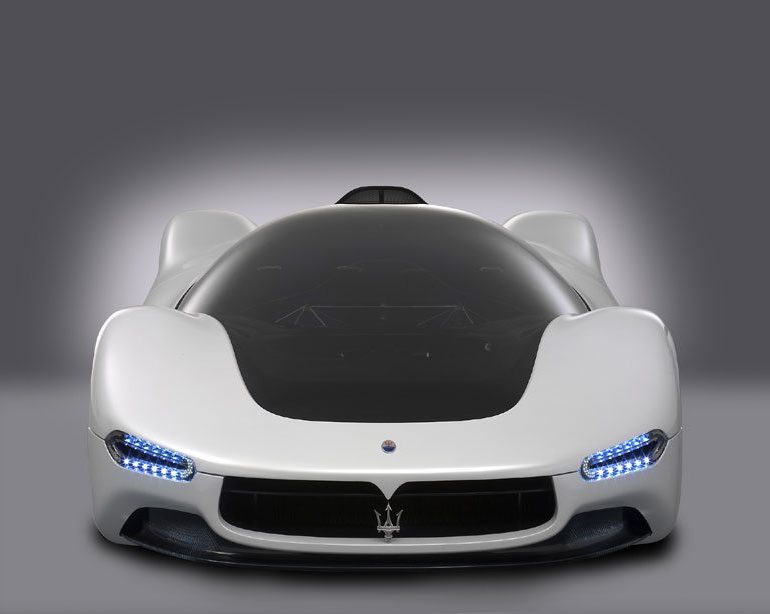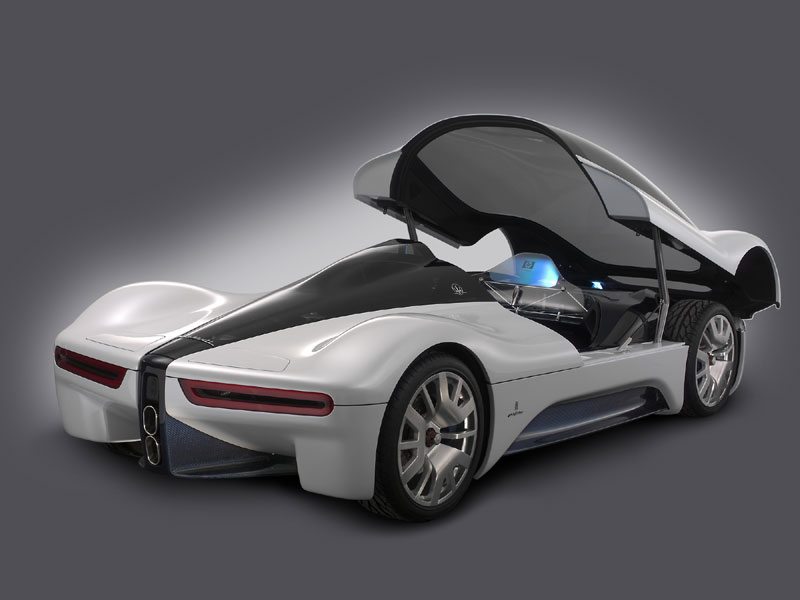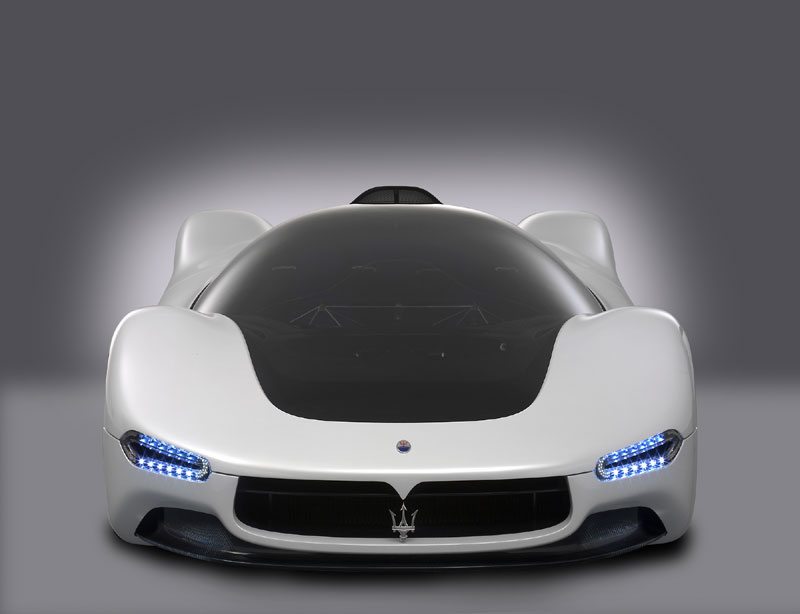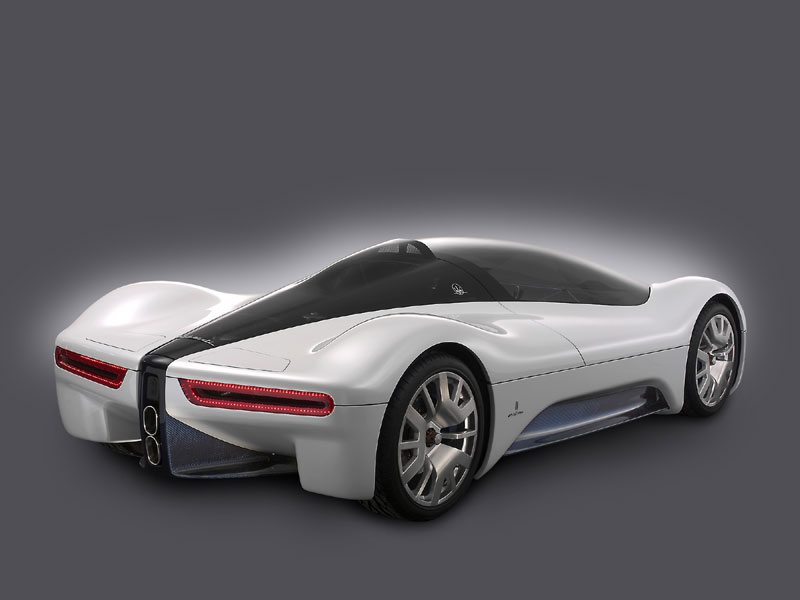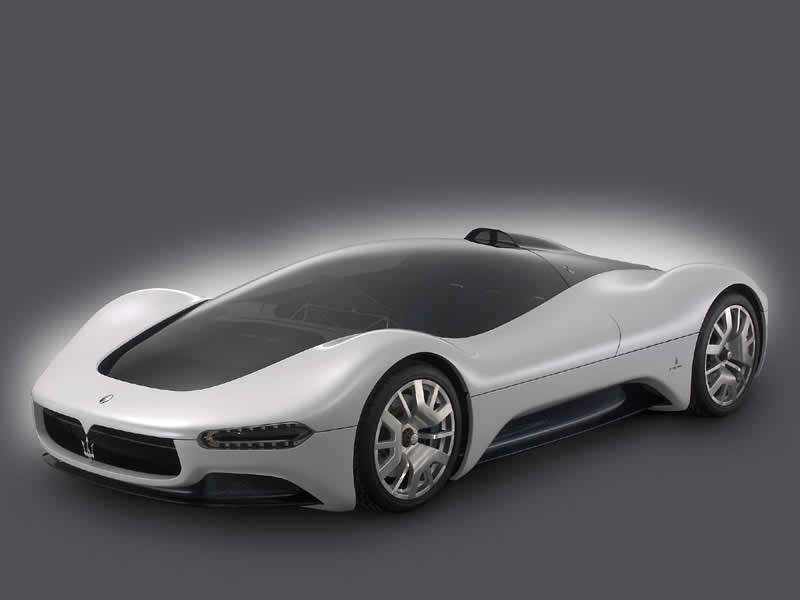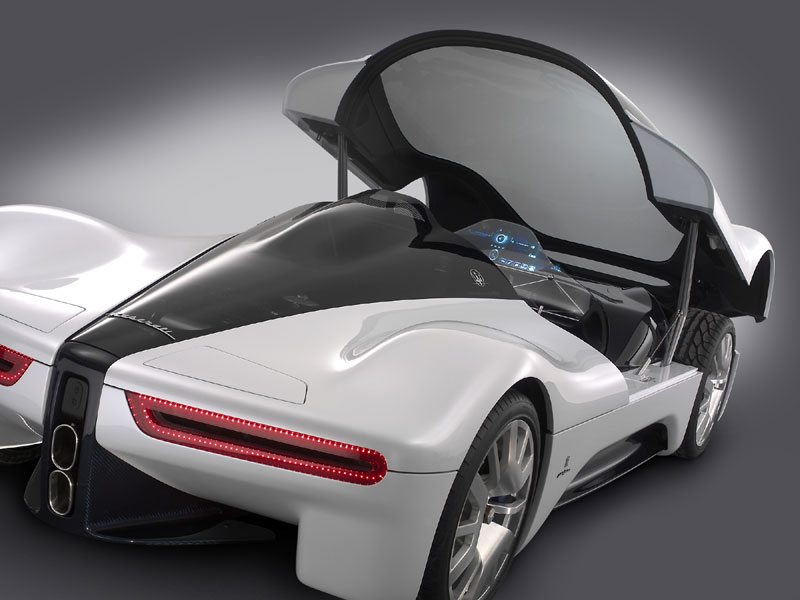2005 Pininfarina Birdcage 75th Concept
In celebration of their 75th anniversary, Pininfarina has chosen to rekindle the spirit of road racing in the sixites. The Birdcage 75th is an extreme concept and an extension of the Maserati brand. It revives the story of a true dream car, a synthesis of exclusive design, sports DNA and technological innovation.
As a futuristic extension of the great Maserati race cars of yesteryear, whose bodies stemmed from a simple extruded fuselage onto which the independent fenders were grafted, it is no coincidence the name of the prototype directly recalls the legendary Birdcage Tipo 63. Nicknamed the birdcage due to the radically triangulated tube construction of its chassis, these cars were truly unique in that the chassis and mechanicals were left in view under unusually large transparent front wind screens.
The Birdcage 75th, in homage to the spirit of the dream car era, is based on the road racing chassis of the Maserati MC12. While the main goal of the Birdcage 75th was to push new stylistic boundaries and techniques, the Maseratiâs over 700 horsepower V12 engine signified that the design concept had to be true to certain race car ideals. Without limiting the project’s creative potential, the design began with the study of the mechanicals themselves, and how they themselves could relate, and thus communicate with the impending exterior design to create a coherent and seamless object.
A clear goal of breaking away from traditional styling led to a particularly innovative integration of the exterior and interior design. The body is divided into two halves, the upper portion being transparent, and the lower portion serving as a structural aerodynamic skirt. The large transparent area of the upper surface not only grants its occupants outstanding visibility, but allows all of the Maserati mechanicals, from its pushrod suspension to the beautifully crafted carbon fibre inlet trumpets of its V12 engine to be showcased and appreciated.
Staying true to its race car roots, the exterior surfaces are kept as low and uncluttered as possible only to ebb and flow into the four independently pronounced fenders. The alloy wheels, which measure an impressive 20ââ (front) and 22ââ (rear) in diameter respectively, are specifically designed to recall the Tridenteâs logo, and as on the racing cars, are attached via a single center locking wheel nut. The low undulating exterior has a natural but purposeful fluidity, appearing as if mercury was merely poured over the mechanics. The result is a powerful yet elegant form which, at a mere meter tall, gives the impression of movement even at a standstill.
Great care was taken in the rich jewel-like details which contrast the elegant simplicity of its streamlined form. The nose culminates in the large oval mouth flanked by low horizontal light. The gaping intake feeds the central mounted radiator and brake ducts, as well as acting as a downforce creating wing surface.
The rear of the vehicle is characterized by its deep diffuser, complemented by active aero panels on the upper surface, which raise and lower accordingly to produce the necessary levels of downforce for stability at any speed. When raised, the wings reveal engine bay cooling outlets, which also serve to lower air pressure underneath the wing surface, and thus aid in creating more downforce. The ultra-thin taillamps also utilize the latest LED technology, and feature hot air outlets to aid in engine compartment cooling.
Glancing through the canopy, one can see the large carbon fibre structure of the nose section, which tapers rearward to embrace the passenger cell. The transparent heads-up display reveals the core of the car. In contrast with the nature of the display is a triangulated structure that supports it, nostalgically recalling the interior of the Birdcage Tipo 63.
As a further characteristic, the car was built entirely of sustainable materials, emphasising the use of recycled components rather than natural resources.
Story by Pininfarina, edited by Supercars.net
In Detail
| submitted by | Richard Owen |
| engine | 65 Degree V12 w/Dry Sump Lubrication |
| position | Mid Longitudinal |
| aspiration | Natural |
| valvetrain | Gear-Driven DOHC, 4 Valves per Cyl |
| displacement | 5998 cc / 366.0 in³ |
| bore | 92 mm / 3.62 in |
| stroke | 75.2 mm / 2.96 in |
| compression | 11.2:1 |
| power | 522.0 kw / 700.0 bhp |
| specific output | 116.71 bhp per litre |
| bhp/weight | 466.67 bhp per tonne |
| body / frame | Carbon & Nomex Honeycomb Monocoque w/Aluminum Sub Frames |
| driven wheels | RWD |
| front tires | 275/30 20 |
| rear tires | 295/35 22 |
| front brakes | Brembro Discs |
| f brake size | x 380 mm / x 15.0 in |
| rear brakes | Brembro Discs |
| r brake size | x 335 mm / x 13.2 in |
| f suspension | Double Wishbones w/Push-Rod Acuated Spring/Damper Units |
| r suspension | Double Wishbones w/Push-Rod Acuated Spring/Damper Units |
| curb weight | 1500 kg / 3307 lbs |
| front track | 1660 mm / 65.4 in |
| rear track | 1650 mm / 65.0 in |
| length | 4656 mm / 183.3 in |
| width | 2020 mm / 79.5 in |
| height | 1090 mm / 42.9 in |
| transmission | 6-Speed Sequential |
| gear ratios | :1 |


